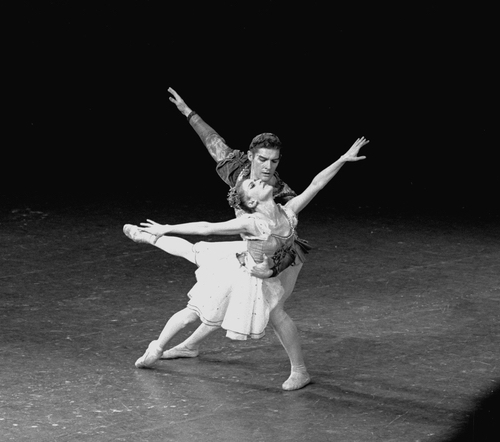Opening Night
Gerald R. Ford Amphitheater
This week, Vail’s International Evenings of Dance performances return with three different jam-packed programs. These unique performances include excerpts from full-length ballets. When performed outside of the context of the story, the excerpts are vibrant displays of technique and personalities but may leave you wondering where they came from and what they all mean. Two out of the three programs include a Balanchine duet that comes from a story ballet. What follows is an explanation of the significance of one of the pas de deuxs within the framework of the ballet from which it comes.

A Midsummer Night’s Dream Act II Divertissement Pas de Deux (Premiere: 1962)
The Midsummer Night’s Dream Act II Divertissement Pas de Deux will be danced by Tiler Peck and Chun Wai Chan on August 4 in the International Evenings of Dance I program.
When, in 1962, Balanchine decided to mount a full-length production of Shakespeare’s A Midsummer Night’s Dream, he was already very familiar with the material. At eight years old he played the role of an elf in a stage production at the Mikhailovsky Theatre in St. Petersburg. Later, he danced the role of an insect in Marius Petipa’s ballet adaptation of Midsummer. Half a century later he was still able to recite excerpts of the play in Russian from memory. (1)
As is often the case with Balanchine, the music (rather than the story) was the inspiration for the ballet. The music was written by child prodigy Felix Mendelssohn who, in 1826, composed A Midsummer Night’s Dream as a concert overture at age seventeen. In 1842, he composed the incidental music for Midsummer. With the overture and incidental music combined, it still only amounted to a little more than an hour of music. Over the course of twenty years, Balanchine assembled other Mendelssohn compositions to expand the material into enough music for an evening-length ballet. This resulted in one of Mendelssohn’s early works, Symphony No.9 in C major, being used in Act II (Mendelssohn was just fourteen when he wrote this one). (2)
The second act of the ballet features the wedding celebration of the three couples in the story. We need not summarize the first act of the ballet here because the pas de deux in question does not correlate to any of Shakespeare’s plot; rather, the dancing appears to be the entertainment for the wedding guests. The pas de deux of the Act II Divertissement was originally danced by Violette Verdy and Conrad Ludlow. In a 2009 interview, Violette shared her thoughts on what the couple represents in the ballet:
“They are the essential, perennial, recognizable young couple […] In a way, they might be there to show how good marriage can be. With the tenderness that goes in good conjugality between a man and a woman–and at the same time the respect, the etiquette, and the manners.” (3)
These musings did not reflect anything Balanchine directly told her in rehearsals; it was her interpretation of how these two dancers contributed to the scene. Interestingly, she also said, “They are to the guests what the Sugar Plum [Fairy] is to Clara looking at womanhood. When she sees the Sugar Plum [Fairy], she sees the possible, most extraordinary answer to ideal womanhood.” Violette viewed the couple in the divertissement as an idyllic example of partnership that the newly married couples could aspire to.
Notes: